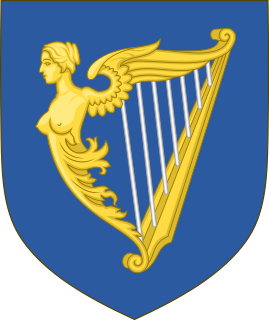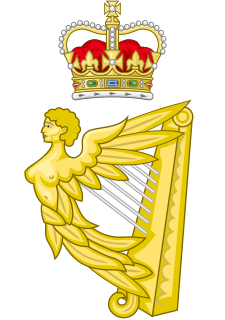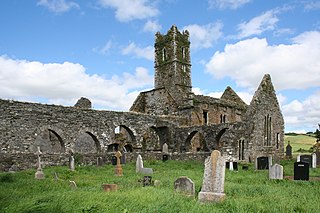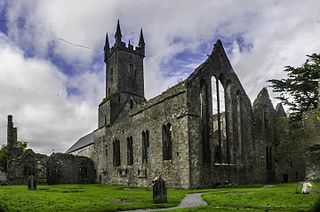| |||||
| Centuries: | |||||
|---|---|---|---|---|---|
| Decades: | |||||
| See also: | Other events of 1542 List of years in Ireland | ||||
Events from the year 1542 in Ireland.
| |||||
| Centuries: | |||||
|---|---|---|---|---|---|
| Decades: | |||||
| See also: | Other events of 1542 List of years in Ireland | ||||
Events from the year 1542 in Ireland.

The dissolution of the monasteries, occasionally referred to as the suppression of the monasteries, was the set of administrative and legal processes between 1536 and 1541 by which Henry VIII disbanded monasteries, priories, convents, and friaries in England, Wales, and Ireland, expropriated their income, disposed of their assets, and provided for their former personnel and functions. Although the policy was originally envisaged as increasing the regular income of the Crown, much former monastic property was sold off to fund Henry's military campaigns in the 1540s. He was given the authority to do this in England and Wales by the Act of Supremacy, passed by Parliament in 1534, which made him Supreme Head of the Church in England, thus separating England from papal authority, and by the First Suppression Act (1535) and the Second Suppression Act (1539). While Thomas Cromwell, Vicar-general and Vice-regent of England, is often considered the leader of the Dissolutions, he merely oversaw the project, one he had hoped to use for reform of monasteries, not closure or seizure. The Dissolution project was created by England's Lord Chancellor Thomas Audley, and Court of Augmentations head Richard Rich.

The Irish House of Commons was the lower house of the Parliament of Ireland that existed from 1297 until 1800. The upper house was the House of Lords. The membership of the House of Commons was directly elected, but on a highly restrictive franchise, similar to the unreformed House of Commons in contemporary England and Great Britain. Catholics were disqualified from sitting in the Irish parliament from 1691, even though they comprised the vast majority of the Irish population.

Monarchical systems of government have existed in Ireland from ancient times. In the south this continued until the early twentieth century, when it transitioned to the Republic of Ireland. Northern Ireland, as part of the United Kingdom, remains under a monarchical system of government.

Timoleague Friary, also known as Timoleague Abbey, is a ruined medieval Franciscan friary located in Timoleague, County Cork, Ireland. It is the largest medieval ruin in West Cork. It is located on the site of an early Christian church dedicated to St Molaga, whose feast day was celebrated down to the seventeenth-century.

The Ross Errilly Friary is a medieval Franciscan friary located about a mile to the northwest of Headford, County Galway, Ireland. It is a National Monument of Ireland and among the best-preserved medieval monastic sites in the country. Though usually referred to by locals as "Ross Abbey," this is not technically correct as the community never had an abbot.

The Crown of Ireland Act 1542 is an Act passed by the Parliament of Ireland on 18 June 1542, which created the title of King of Ireland for King Henry VIII of England and his successors, who previously ruled the island as Lord of Ireland.
Events from the year 1536 in Ireland.
Events from the year 1537 in Ireland.
Events from the year 1539 in Ireland.
Events from the year 1540 in Ireland.
Events from the year 1541 in Ireland.
Events from the 1540s in England.
The Court of Augmentations, also called Augmentation Court or simply The Augmentation, was established during the reign of King Henry VIII of England along with three lesser courts following the dissolution of the monasteries. Its primary function was to gain better control over the land and finances formerly held by the Roman Catholic Church in the kingdom. It was incorporated into the Exchequer in 1554 as the augmentation office.
Events from the year 1565 in Ireland.
Events from the year 1575 in Ireland.
Events from the year 1636 in Ireland.
Events from the year 1550 in Ireland.

Ennis Friary was a Franciscan friary in the town of Ennis, County Clare, Ireland. It was established in the middle of the 13th century by the ruling O'Brien dynasty who supported it for most of its existence. Following the suppression of the monasteries in the 16th century, the friary continued to function for a while despite the loss of its lands. In the early 17th century, the buildings were handed over to the Church of Ireland as a place of worship. It was used as such until the late 19th century. After the construction of a new Church of Ireland building, the friary fell into ruin. Managed by the Office of Public Works since the late 19th century, it was formally returned to the Franciscan Order in 1969.